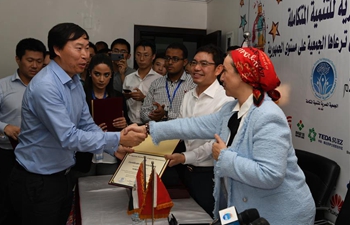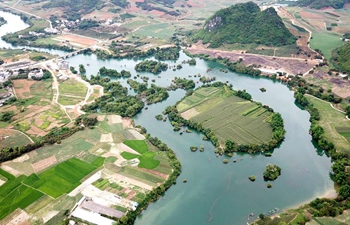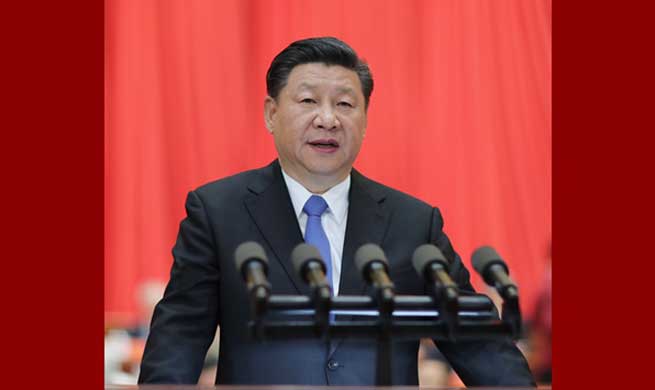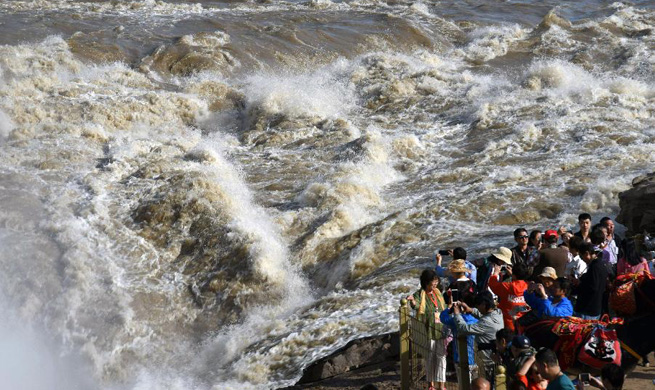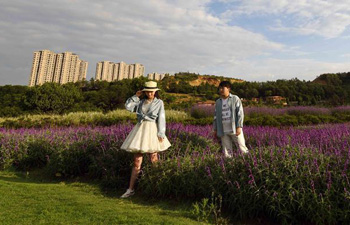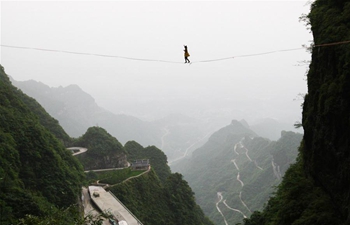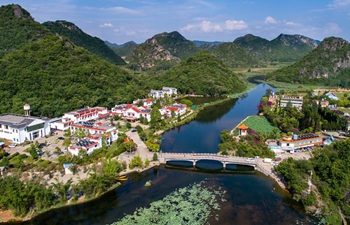URUMQI, May 28 (Xinhua) -- On hearing from doctors that he only had months left to live in 2005, Wang Chengbang knew what he had to do: plant more trees.
It is something he has now done for more than a decade, every spring in Korla City, northwest China's Xinjiang Uygur Autonomous Region, and something he continues to do to this day. Defying the diagnosis, he is now 82 years old.
Korla lies 70 kilometers south of the Taklamakan desert, China's largest. On windy days, the city used to be enveloped by thick sandstorms.
"Vast, barren deserts," Wang said, recalling when he arrived in Xinjiang as a military recruit in 1956. "I felt a little disappointed at first, then I became excited seeing the beautiful green Hami [basin] from the truck."
The Hami Basin is an oasis surrounded by desert in the east of Xinjiang, with nearly two-thirds of the area green-hills.
The basin changed Wang's impression of the region and his idea of what it could be. "That's when I decided to plant trees in Xinjiang, wherever I was," he said.
Since joining the army, Wang has won many military awards for his dedication and is well known for planting trees in the military camp in his spare time.
"First it was just me planting the trees," Wang said. "Little by little, my comrades also joined me."
In the 1980s, Wang was promoted to deputy chief of staff in a command in Xinjiang, and he asked for running the logistics work in the command.
Under his leadership, they planted trees on a large area of salt marsh where a military camp was later built.
Since retiring in 1994, he has made planting trees his full-time job. From 1997, Korla launched a campaign to curb sandstorms by planting trees on Longshan Hill, east of the city.
"In the past, nothing grew on the hill," said Zhang Yizhi, head of Korla's administration of parks and forestry. "The soil was too sandy and salty for many plants."
The bureau selected around 18 tree species suitable for the soil and called on volunteers to plant them.
More than 1.8 million people have volunteered in the campaign so far, planting nearly 10 million trees covering more than 4,320 hectares.
"Wang is the most senior and one of the most dedicated volunteers in the campaign," Zhang said.
"I usually left home at 9 a.m. and returned in the evening," Wang said of his work in Longshan Hill.
Wearing an old-style green military uniform, he dug holes, watered trees, examined their health and cleared away the dead ones.
Wang wore the uniform almost everyday. "I have never worn a suit, it's always the uniform," Wang said. "I want to carry the military spirit with me all the time."
Disciplined in his daily tree-planting routine, Wang has become more and more professional.
"He's always talking about trees," Zhang said. "He knows the climate, soil and trees suitable for Korla very well."
In 2001, Wang found a kind of willow that could stay green even in the winter. He transplanted the tree to a garden, discovering it was resistant to the dry climate and got few diseases.
He introduced the willow to the city's bureau of parks and forestry, which started planting it as a decorative tree along the banks of city's main river.
"No expert in the bureau knew about the tree back then," Zhang said. "We ended up naming the tree after Wang, calling it the Chengbang Willow."
The administration even offered Wang a job helping select and grow tree seedlings suitable for Korla.
"I've been living in Xinjiang for more than 60 years now," Wang said. "My wish is still to grow more trees and leave a greener Xinjiang for the next generation."







